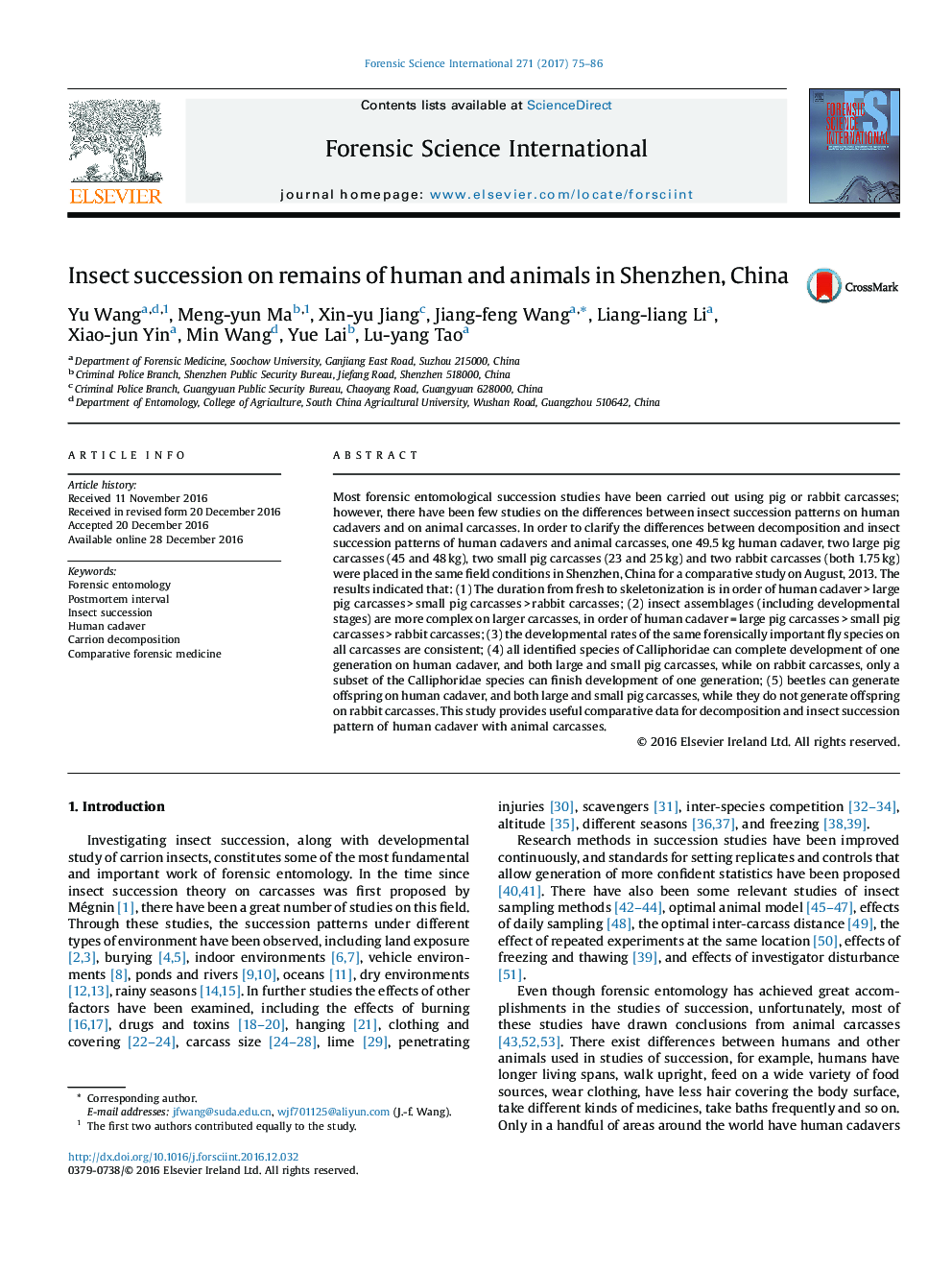| Article ID | Journal | Published Year | Pages | File Type |
|---|---|---|---|---|
| 6462046 | Forensic Science International | 2017 | 12 Pages |
â¢Decomposition process of human, pig and rabbit was studied (118 days experiment).â¢Decomposition duration is in order of human > large pig > small pig > rabbit.â¢Insect assemblages (include life stages) were compared.â¢Development rates of the same fly species on all carcasses were consistent.â¢Basic entomological succession data of Shenzhen (China) was provided.
Most forensic entomological succession studies have been carried out using pig or rabbit carcasses; however, there have been few studies on the differences between insect succession patterns on human cadavers and on animal carcasses. In order to clarify the differences between decomposition and insect succession patterns of human cadavers and animal carcasses, one 49.5 kg human cadaver, two large pig carcasses (45 and 48 kg), two small pig carcasses (23 and 25 kg) and two rabbit carcasses (both 1.75 kg) were placed in the same field conditions in Shenzhen, China for a comparative study on August, 2013. The results indicated that: (1) The duration from fresh to skeletonization is in order of human cadaver > large pig carcasses > small pig carcasses > rabbit carcasses; (2) insect assemblages (including developmental stages) are more complex on larger carcasses, in order of human cadaver = large pig carcasses > small pig carcasses > rabbit carcasses; (3) the developmental rates of the same forensically important fly species on all carcasses are consistent; (4) all identified species of Calliphoridae can complete development of one generation on human cadaver, and both large and small pig carcasses, while on rabbit carcasses, only a subset of the Calliphoridae species can finish development of one generation; (5) beetles can generate offspring on human cadaver, and both large and small pig carcasses, while they do not generate offspring on rabbit carcasses. This study provides useful comparative data for decomposition and insect succession pattern of human cadaver with animal carcasses.
